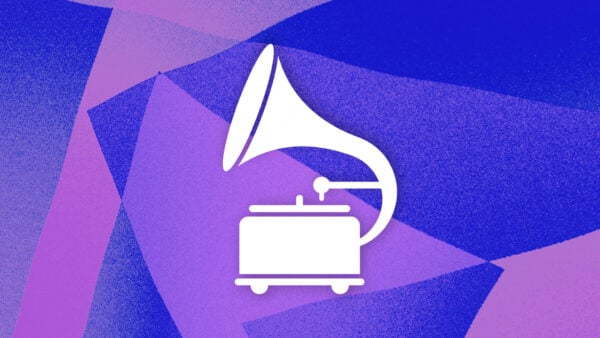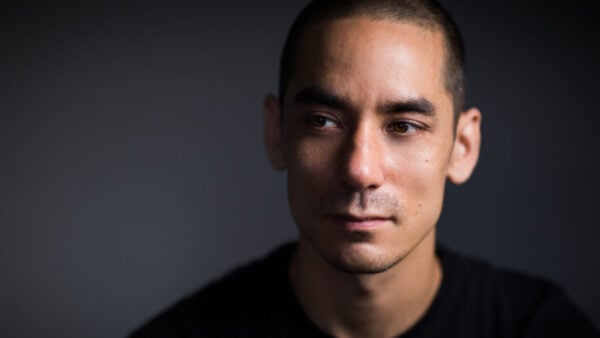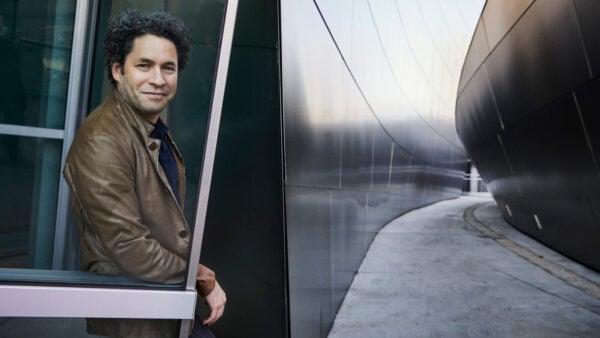
Esa-Pekka Salonen (Photo: Benjamin Suomela)
Composer and conductor Esa-Pekka Salonen is known for his innovative approach to creating new music and curating concerts. His 2018 residency with the Chicago Symphony Orchestra is a testament to the diversity of his repertoire. In the middle of a four-concert run of Mahler’s great Symphony No. 9 with the Chicago Symphony Orchestra, he conducted the CSO’s final MusicNOW concert in its 20th anniversary season, which featured new works by Magnus Lindberg and Anna Thorvaldsdottir as well as world premieres by Elizabeth Ogonek and Samuel Adams. He completes his residency with three concerts featuring Brahms’s Variations on a Theme by Haydn, Schoenberg’s Transfigured Night, and Bartók’s Piano Concerto No. 3. Following an afternoon of rehearsing Bartók with the CSO and pianist Mitsuko Uchida, Salonen sat down for a wide-ranging conversation about the importance of performing new works alongside beloved classics in order to ensure the future of classical music in the twenty-first century.
“The beloved classics have once been new music – every single one of them. If we go back not that far in history, I would say in the mid-nineteenth century, most concerts were new music concerts. The idea of playing the back catalogue, as it were, was not the norm. Something changed in the mid-twentieth century. Our institutions became more historically oriented and a brand new piece became more of a rarity, instead of being the norm. There was a kind of reversal.
“I’m not quite sure what the mechanism was; I think it has to do with lots of things. It also has to do with music outside the classical genre. When the LP became widely available, of course, pop music and rock-n-roll spread globally, and I think the very effective marketing of that music pushed classical music into a more backward-looking space. There are other factors as well. But we have to remember new music was once ‘normal,’ and I think that’s the way it should be still.
“When people ask me, ‘Why do you play all of this new music?’ I don’t see why that should be strange in any way; for me, this is normal. If you had a choice between today’s newspaper or last week’s newspaper, which one would you read? I think anything that helps us to try to understand the here and now: Who am I? Where am I in the cosmos? Where am I in history? What’s happened before me? What’s going to happen tomorrow? – which is the question that everybody’s interested in. To experience art that has been created recently, or now, or yesterday, helps in that process.
“Going to hear a new music concert liberates you in a way that going to hear Brahms doesn’t. You can say, ‘I really hated that piece. It was awful.’ Or you can say, ‘I loved it!’ When you say ‘hate Brahms,’ you don’t really. You can’t have that feeling. You can’t say it’s crap,” he said with a chuckle. While you might be able to say that you don't care for a certain work, “you can’t make that kind of ‘quality’ assessment about great classics that we hear every week in concerts. They have gone through a historic filtering process, some kind of Darwinist game in which only the best music survives,” he said.”
On the other hand, there are complex factors that affect the evolution of the classical canon, one of which is politics. “If we think of 19th century European political history, music was commonly used as a political tool. For example, Italy was uniting and Verdi was used as a propaganda tool and very effectively so. When music has a political purpose, that confuses the actual value argument, because all of a sudden you have Beethoven’s Ninth Symphony being used as the European Union anthem. The “Ode to Joy” tune has been elevated to the highest political status, which means that we no longer experience it as a tune. When we hear Beethoven’s Ninth, we don’t experience it as a composition. There’s so much mythology and reverence and political ballast that we actually don’t hear it properly.”
It’s difficult to find an era of music in which politics and music aren’t somehow intertwined. Political factors have influenced the choices we make regarding what older music still gets performed today, and conversely, new music can also impact our modern political environments.
“If one thinks of my country, Finland, Sibelius had an absolutely crucial role in the creation of national identity, Salonen reflected. “It’s a country that was first part of Sweden for 600 years and then part of the Russian Empire for another 100 years. How do you create a national identity and a cultural identity? And you have to bear in mind that it was a bilingual country with Finnish and Swedish, Finnish being a language that’s very isolated – who else in the world understands it? It was difficult to create an identity through literature because of this bilingual thing. Also there was a very active censorship going on by the czarist bureaucrats.
“Enter Sibelius, who combines the cultural backgrounds, both Swedish and Finnish, and writes symphonies that maybe were not intentionally written as such, but they are understood by the people as battle cries for independence. And of course, the bureaucrats can’t censor a symphony. What will you take out? What’s the dangerous phrase in a symphony that will cause people to think about independence? The first time Finland was mentioned as a nation among nations was at the Paris World Expo in 1900 when Robert Kajanus conducted the first symphony by Sibelius, and the poster says, ‘Finlandia: as a nation.’ Of course, the czarist administration went berserk, and that’s how it all started.
“Sibelius had a completely overblown position in the Finnish culture, and everything was beyond criticism. In Finland, you’re not even allowed to say you don’t like Sibelius because it’s just not possible. This kind of canonization of intellectual property is actually really detrimental.
“This is why you should go hear new music: it hasn’t been canonized yet. Of course, some people are more famous than others. But no living composer is on the same kind of pedestal as the old guys are – I mean the dead ones. So there’s a lot more dialogue, a lot more freedom. It’s a little more challenging for the listener because you can’t buy an already formed opinion about a new work. The program note doesn’t say ‘this is a masterpiece,’ like it often will when you hear a Mozart piano concerto or a Wagner opera. It doesn’t come with that baggage. I think this should be quite attractive. I find it attractive myself. The part I play as the midwife, assisting in birth, is very exciting and very satisfying. To continue with the same analogy: the baby’s out, we don’t quite yet know who he is or she is. They start showing their personality later. By this, I’m trying to say that things need time.”
Works of music need time in front of an audience. Though at the same time, “It’s difficult to say what exactly is the work. Is the work the symbols on the paper? Or is the work the sound waves that hit the interface, which is us? Is that the work? Or is the work the internal narrative we create when we hear something?”

Esa-Pekka Salonen conducts members of the Chicago Symphony Orchestra in the world-premiere performance of Samuel Adams's Chamber Concerto featuring violinist Karen Gomyo on May 22, 2018 in Orchestra Hall at Symphony Center (Photo: Todd Rosenberg)
“One reason why, with written music, there’s not a lot of money, is because you can’t own it. I mean, you can. But you don’t actually know what you own. The mystery, and what actually affects us, is that you can’t own it. A painting – the visual arts – moves millions around. With music, you can have copyright, but you can’t own it, which is a curse but is also the beauty of it. Music is something that we don’t even know where it is.”
For orchestras in the twentieth century, “new music is completely necessary – without it, everything would just dry up and go away. By this, I mean that every day that goes by means that the distance between us, and say, Beethoven, gets longer. Nobody quite knows how the mechanism of relevance works. But if we imagine relevance as some kind of rubber band, every day stretches it a little bit,” he said, smoothly miming the action with his own hands. “So Beethoven doesn’t come closer to us, he stays where he is. It’s imaginable that one day, it just snaps, because every thread of relevance has a point where it just can’t go any further. This has happened already in the mainstream to pre-Baroque music. I know I’m going to anger lots of people by saying that medieval music is no longer relevant, because people don’t understand it. The gesture of medieval music is not understood to music people who aren’t scholars. Even Renaissance music… I think the relevance for us starts around Monteverdi. So something has happened, and I don’t want this to happen to all the stuff that I love. So how do we make sure it doesn’t happen?
"We have to see the repertoire and institutions as some kind of gardening. In a garden – a healthy garden – the old trunks have fresh branches. There’s growth on every level. You have the ground level, then bushes, and trees, and so on. The new leaves – that’s new music – without them, everything would dry up and become mummified and finally doesn’t interest anybody. I don’t want to end up as somebody who’s like a classic car collectors, who are dedicated and fanatical, but there’s not many of them.
“I don’t want to end up in a total niche. I want to commission new works for orchestras and ensembles, and I want to perform them. I’m having fun doing that, and I know lots of people in the audience who share that feeling. To be totally honest, a lot of us haven’t been great. And by ‘us,’ I mean composers and institutions. We haven’t been great in making new music approachable. And by this, I don’t mean making it easier or cheaper. But there has been this kind of pseudo-intellectual bubble in which we’ve been operating, and that’s off-putting for lots of people, including myself.”
Salonen, who constantly changes his approach to how he creates his own works, had a paradigmatic shift in his thinking during his tenure as music director of the Los Angeles Philharmonic. “I was trained in a very strict, modernist way – we thought it was mainstream in those days, but now of course we realize it was only one thread. The demi-god Boulez, and some other people, told us what was right and what was wrong. It was almost like stylistic choice as moral action. The modernist movement, when it started after the War, there was a very strong element of moralism. I can kind of understand it. I cannot imagine what they felt, but when you think of the idea of starting a new musical activity, after a near total destruction of Germany, and millions and millions of people killed, either in battle or in concentration camps, and you try to figure out, ‘how should music sound?’ I understand that it’s tempting to make some kind of moral choice to justify how music sounds so you don’t have to deal with more complex issues such as, ‘How do I feel?’ Or, even worse, ‘How does the listener feel?’ It was kind of eradicating the element of feeling out of the equation, because that was the most difficult, annoying part of the discourse.
“Then, when I went to LA, I realized the sort of intellectualized value systems of the European modernist dogma was of no interest. No way. Nobody gave a shit. It was like, ‘Okay… that’s interesting. But how does it sound?’ I was kind of lacking a good answer to that. I was so used to having an intellectual discourse and hammering in the arguments from the philosophers and the theorists. People said, ‘Yeah that’s great, but will I like it? What does it do to me?’ These kind of really annoying questions!
"Of course, when I was young, young people often want to know what is what. Understandably – what is right, what is wrong? Who am I for? What am I against? You know, these kinds of clear markers. The modernist dogma gave the answers. Do this, and you’ll be fine. There was some kind of self-doubt on my mind all the time. I do the ‘right’ thing, but somehow I don’t really think it pleases me, because it doesn’t do much to me. But I thought I was just inferior in some way, so I didn’t even talk about. If you have a serious self-doubt, you don’t go out and publish about it; you’re trying to sort it out on your own.”
Asking these questions not only helped change Salonen’s approach to composing new music, but has also helped him consider broader ways in which our musical institutions can, like gardens, help foster new growth.
“There are lots of things that help. If you think of today’s younger folks, who have do not have classical music as the center of their interests, we have to emphasize the uniqueness of the event. There’s the subscription system. I just conducted four performances of Mahler’s Ninth Symphony, which were all very enjoyable from my point of view. But there is not the same uniqueness as a new music concert. A new music concert, especially if there’s a world-premiere on the program, is a completely unique moment in history, and if you’re not there, you missed it, and you’re done, and you’re worthless,” he said with wry laughter. “We should somehow make sure that you’re witnessing something that no one else before or after will. I think for younger folks, the idea of something un-missable is quite attractive. We aren’t going to the concert because it’s Thursday, we’re going because it’s something we shouldn’t miss.
“A new music concert shouldn’t be a stiff kind of bourgeois experience, it should have kind of a club vibe – at least partly. People would come in, have a good time, have a beer or two, and then have a bite to eat afterwards – like it used it to be. Okay, so the social structure is different, but Haydn was at Esterházy writing wild symphonies. Why wild? Because his employer Prince Esterházy was a very sophisticated guy, so he wanted to have the newest of the new. But these were like soirees, and Haydn would play his latest avant-garde piece and then a lively conversation ensued. It should be like that kind of thing instead of sitting there for two-and-a-half hours and wearing your best suit. I’m not a fascist, so people can wear whatever they want,” he said wearing the same black sneakers that he wore standing on the podium in Symphony Hall to conduct two world premieres just two days earlier. Sneakers, he added, are “so much more comfortable than any other gear.
“I think we shouldn’t be apologetic about the material, the substance – that’s what we do. But we should be very accommodating about all the other external stuff. And, it should be cheap enough so that it wouldn’t ruin your budget as a student or young adult. If you have to pay too much for a ticket to go to the opera or a symphony, especially for a couple, it can be prohibitive in many cases. There has to be a way to keep ticket prices low, especially for the new stuff.
“Also, I think we should use technology to create a more overall interesting experience. Most concert halls are really boring visually. The lighting is really boring because there’s this sort of general house lighting, and it’s very hard to focus visually because you can see your neighbors as well as you see the conductor. I really enjoy lighting design, even in so-called ‘normal’ concerts. It really focuses the mind.”
He also encourages “all kinds of collaborations with new music, whether it’s virtual reality, or augmented reality when it’s finally useful. Video is an old hat. But using all these elements can enhance the experience. There’s a lot you can do with consumer-level technology without paying lots of money, we just need to be open.”
On the survival of classical music institutions, Salonen says, “I’m actually not pessimistic about it at all. We just have to make a few good calls, and it will be fine.”
Esa-Pekka Salonen is the principal conductor and artistic advisor for London’s Philharmonia Orchestra, the composer-in-residence at the New York Philharmonic, and artist in association at the Finnish National Opera and Ballet. Learn more about his residency with the Chicago Symphony Orchestra by visiting cso.org.







